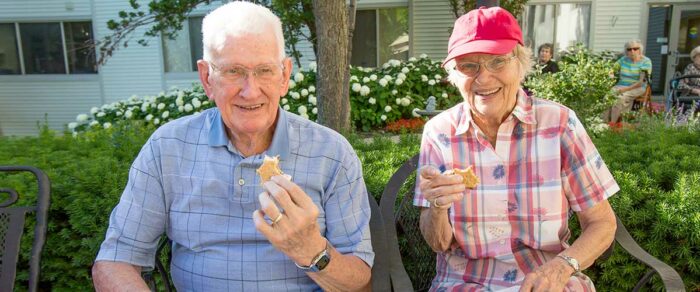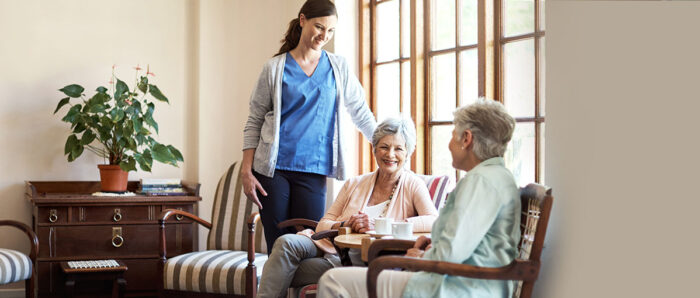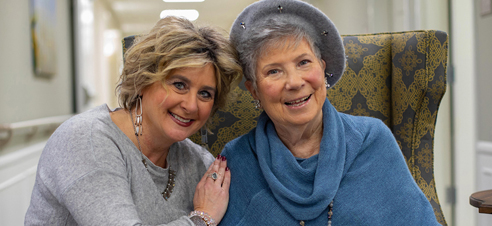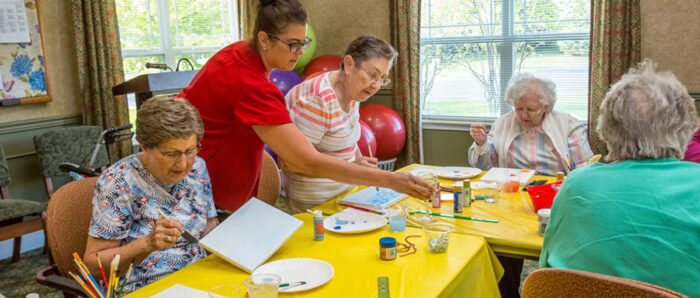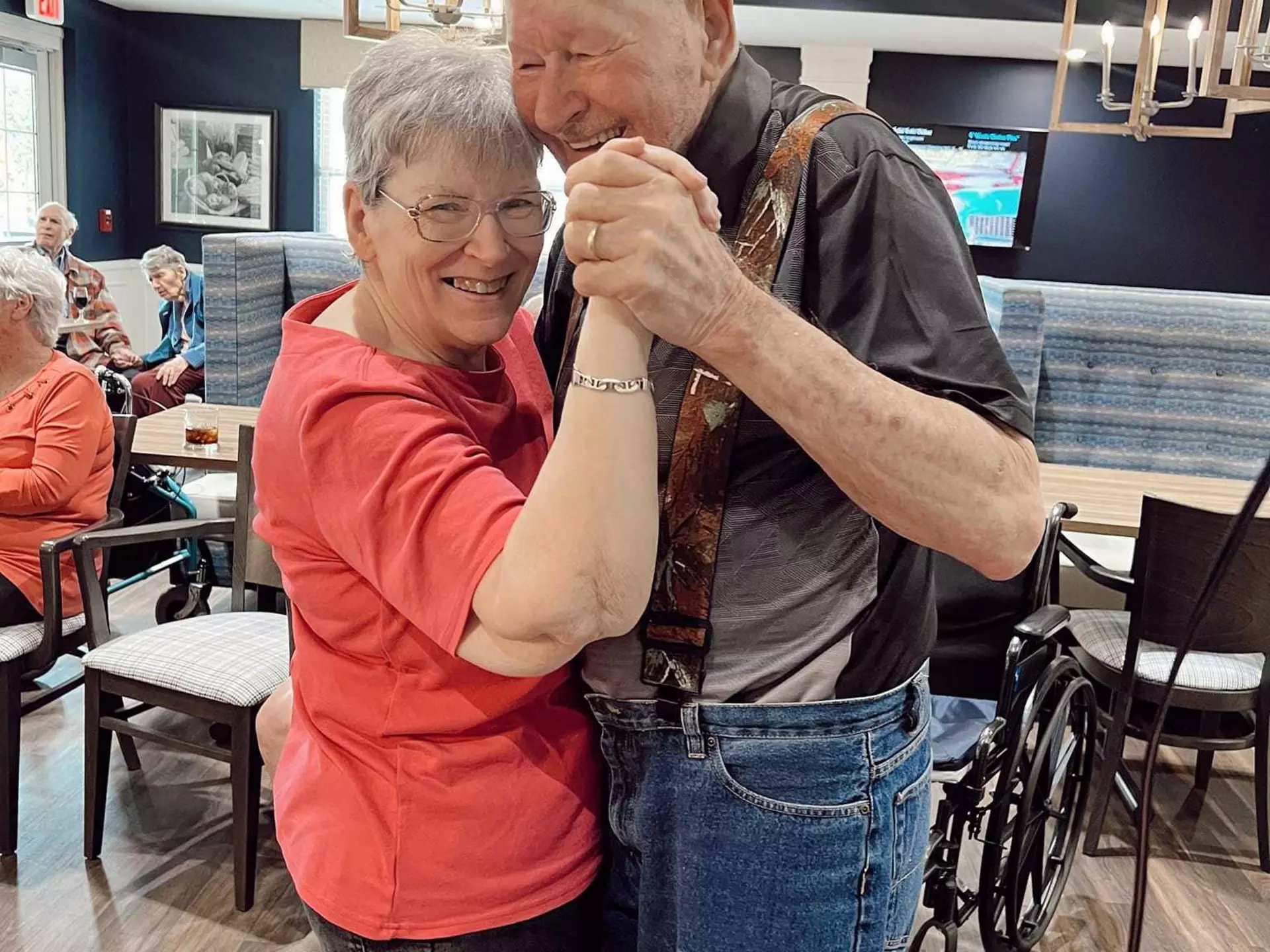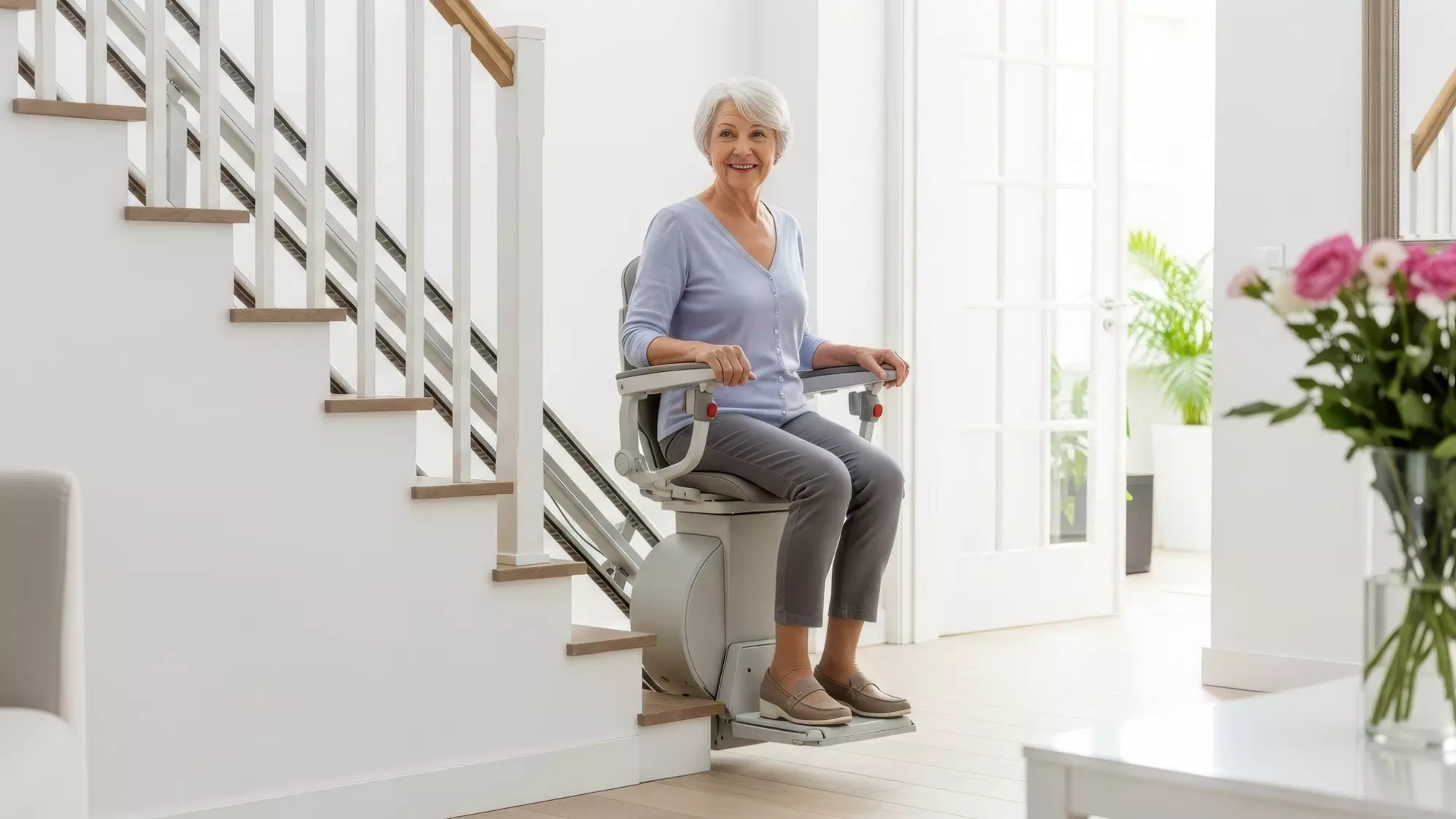Regular physical activity is beneficial for anyone, especially seniors. It can help maintain good health and enhance quality of life as we age. However, some natural limitations of aging, like stiff muscles or weakened joints, can make certain workouts, like running or jumping, less enjoyable or even unsafe for some seniors.
Still, there are many options that are gentler on joints and muscles while delivering the same great results. In this blog, we’re sharing our top picks for the best low-impact exercises for seniors, as well as practical tips to help you add them into your routine. Whether you’re just kickstarting your fitness journey or looking to switch things up, we’ve got you covered.
Why Low-Impact Exercises Are Important
Despite the name, low-impact workouts can be just as effective as traditional exercises. Furthermore, most can be adjusted for different ages and fitness levels, making them a popular option for many older adults.
Let’s take a closer look at why low-impact exercises for seniors are particularly important:
- Minimizes Joint Strain: Vigorous or high-impact workouts, like sprinting or CrossFit, tend to put a lot of stress on the joints, which can be problematic for seniors, especially those with arthritis or other mobility issues. Low-impact exercises offer an effective way for older adults to exercise without risking injury.
- Improves Balance and Coordination: It’s normal to experience changes in muscle strength and balance as we age. Many low-impact exercises are great for improving balance and coordination, which are essential for maintaining independence and reducing the risk of falls.
- Enhances Flexibility: Muscles also tend to lose flexibility as we age, affecting a person’s range of motion. Regularly engaging in low-impact exercises may help maintain or even improve muscle mass and flexibility, allowing you to continue doing the things you enjoy for longer.
- Boosts Mental Well-Being: Alongside many physical health benefits, low-impact workouts are also great for your brain. Numerous studies show that regular physical activity, including low-impact exercises, can positively impact mental health by improving cognitive function and helping to reduce stress, anxiety, and depression.
- Promotes Social Interaction: Like physical activity, social interaction is important at any age. Many low-impact exercises can be done in group settings, like fitness clubs or yoga classes, offering numerous opportunities to meet new friends.
Ranking the Best Low-Impact Exercises for Seniors
To rank the best low-impact exercises we utilized comprehensive research. Before you incorporate a new exercise into your routine, it’s important to speak to your doctor to be sure it’s a good idea. After that conversation, and now that you understand the many wonderful benefits of low-impact exercises for older adults, here are a few options you may want to try:

1. Tai Chi
Tai Chi combines gentle, flowing movements with meditation and controlled breathing. It’s gentle on the joints and doesn’t require any special equipment, making it an excellent option for people of all ages and abilities, including older adults.
Practicing Tai Chi regularly has been shown to have many physical and cognitive benefits, including improving overall strength, balance, coordination, and cognitive skills, which are especially important for maintaining independence and a good quality of life as we age.
You can check out your nearby community center, fitness club, or local gym to see if they offer beginner-friendly classes. If you prefer to exercise at home, there are also plenty of free tutorials online to help you master the basics.

2. Multicomponent Exercise
A multicomponent exercise program typically combines different types of exercises in a single session. These exercises target key fitness areas, including muscle strength, balance, and endurance. For instance, you might go for a swim, lift some weights, do single-leg stands to help improve balance, and finish with some light stretching.
A recent study showed that multicomponent exercises can improve overall physical function, help preserve independence and reduce the risk of falls, all of which can be especially important as we age.

3. Recreational Sports
If you’d like to stay active while enjoying a bit of friendly competition, consider trying gentle sports, like pickleball, golf, or even swimming. Besides being fun, recreational sports may offer numerous health and wellness benefits, including improving mood, promoting sleep quality, reducing blood pressure, and sharpening cognitive skills. You’ll also find lots of opportunities to meet new friends.
Check with your local community or senior center to see if they offer any sports you might enjoy. You can also look into senior living communities nearby; many offer a wide range of low-impact exercises for seniors, including recreational sports, for residents to enjoy with friends.

4. Walking
You might be surprised to learn that walking can offer many of the same great benefits as other low-impact exercises for seniors. Regular walking has been shown to improve cardiovascular health, strengthen bones and muscles, and enhance balance and coordination. Moreover, walking is gentle on the joints and doesn’t require any special equipment.
In addition to its many wellness benefits, walking is a wonderful way to enjoy the outdoors with friends. The great thing is, you don’t need to walk long distances to reap rewards. Even a few minutes of a slow-to-moderate walk around your neighborhood or a parking lot can make a big difference. Be sure to wear comfortable shoes and clothes, and drink plenty of water to stay hydrated throughout.

5. Strength Training
Muscles are important for daily activities, including lifting groceries, getting up from a chair, and climbing stairs. However, bone density and muscle mass naturally decline as we age, a condition called sarcopenia.
Strength and resistance exercises specifically aim to build and maintain muscle strength by adding some form of resistance, such as light dumbbells, resistance bands, or even your own body weight.
Light resistance training is excellent for improving muscle mass, bone density, and balance, which are important for performing activities of daily living (ADLs), such as getting in and out of bed or using the bathroom.
According to experts, seniors should aim for two to three sessions of light to moderate strength training each week. It’s usually best to begin with bodyweight exercises, like wall push-ups, seated leg raises, or lifting light weights, and gradually build up the intensity as you get stronger.
Here’s a simple routine you can try at home. Feel free to adjust each exercise to your fitness and ability level.
- Warm-up: It’s always a good idea to start with gentle stretches to get your muscles ready and reduce the risk of injury. To get warmed up, try doing the following for one minute:
- March in place: Slowly lift your knees while gently swinging your arms.
- Shoulder rolls: Gently roll both shoulders in circles forward and then backwards.
- Arm circles: Extend your arms to the sides and make small, controlled circles.
- Wall Push-ups: Stand a few feet away from a wall. Place your palms on the wall at shoulder height, and slowly bend your elbows to bring your chest toward the wall. Slowly push back to the starting position. Try to repeat three to five times. This exercise is good for building upper body strength (arms, chest, shoulders).
- Chair Squats: Stand in front of a sturdy chair with your feet about hip-width apart and your back straight. Slowly bend your knees and lower your body toward the chair, as if you’re going to sit down, or sit fully if needed. Then, press through your heels to slowly return to a standing position. Doing chair squats regularly can help strengthen the muscles in your lower body, which are important for maintaining mobility.
- Seated Bicep Curls: Sit straight in a sturdy chair while holding a light weight (like a dumbbell or water bottle) in each hand. Rest your arms at your sides with palms facing forward. Slowly bend your elbows to lift the weights toward your shoulders, keeping your upper arms still. Lower the weights back down and try repeating three to five times. This exercise is great for building strength in your upper arms.
- Calf Raises: Stand with your feet shoulder-width apart. Hold on to a sturdy chair for support. Slowly lift your heels off the ground using the tips of your toes. Pause briefly at the top and then slowly lower your heels back down. Repeat as many times as you feel comfortable. Calf raises help strengthen your lower legs and ankles, which can improve balance and help prevent falls.
- Seated Leg Extensions: Sit in a sturdy chair with your feet flat on the floor. Slowly straighten one leg out in front of you as far as you can comfortably go. Hold it up for a second or two, then slowly lower it back down. Switch to the other leg and repeat. Seated leg extensions can improve leg strength and joint flexibility, which are key for maintaining mobility.
- Cool-down: Finish your workouts with gentle stretches to help relax your muscles. To cool down after your workout, try doing:
- Seated hamstring stretch: Extend one leg, reach toward your toes (or as far as you comfortably can). Hold for 15–20 seconds.
- Neck stretch: Tilt your head to one side, hold for 10 seconds, then switch.
- Shoulder stretch: Bring one arm across your chest and hold it with the opposite hand for 15 seconds on each side.

6. Dancing
While it might not seem like exercise, dancing is a great way to support your health! It can help improve flexibility, boost balance and coordination, support heart health, and even help preserve cognitive skills.
Before getting started, be sure to wear comfortable shoes and check your space for any trip hazards. You can enjoy dancing to your favorite music right at home. Or, if you’re looking for something more social, try checking out senior-friendly dance classes in your area.

7. Endurance Exercises
Endurance exercises, also known as aerobic activities, are great for strengthening the heart and lungs, which may help build stamina and improve cardiovascular health. They also offer a range of other benefits, like supporting weight management, lowering blood sugar levels, improving circulation, and more. You also have plenty of enjoyable options to choose from, including brisk walking, water aerobics, and cycling.
While low-impact exercises are generally safe for seniors, some endurance workouts may not be ideal for people with heart conditions, a high risk of falling, or severe joint pain.

8. Yoga
Yoga combines slow, controlled movements with mindful breathing, offering many benefits that can be especially helpful for older adults. Simple forms of yoga, like chair yoga or cat-cow stretches, may help improve balance, ease joint pain, and reduce muscle stiffness. Practising yoga regularly has also been shown to support good brain health and help relieve stress and anxiety.
To get started, check with your local community center or gym to see if they offer beginner-friendly yoga classes. There are also many free online classes specifically made for older adults.

9. Balance Exercises
Like many bodily functions, balance tends to decline later in life, which can increase the risk of fall-related injuries for seniors. However, many studies have shown that regularly performing balance exercises, like the heel-to-toe walk, single-leg stands, and side leg raises, can significantly reduce the risk of falls among older adults. These exercises also provide many of the same benefits as other low-impact exercises for seniors.
Before starting a balance exercise, ensure the floor is not wet or slippery to help reduce the risk of slipping or falling. It’s also important to wear comfortable shoes with good grip to help keep your feet planted during the workout. You may use a sturdy chair for support if needed.
How to Pick an Exercise Based on Your Goals
There are plenty of low-impact exercises for seniors to choose from. That said, some may be a better fit for you than others.
Here’s a step-by-step guide to help you choose a low-impact exercise that works best for you:
- Identify Your Goals: Different low-impact exercises target specific areas of the body. Before you begin, it’s important to identify what you’d like to improve. That way, you can choose exercises that align with your fitness goals.
- Factor in Physical Limitations: Not all low-impact workouts are necessarily right for you. When choosing a workout, be sure to factor in any physical challenges you may have, like back pain or arthritis, to help reduce the risk of discomfort or injury.
- Consult With Your Doctor: It’s usually a good idea to speak to your doctor before trying out a new exercise, especially if you have an existing health condition. They may also recommend some good exercises that are safe for you.
- Pick Activities You Genuinely Enjoy: The best exercise is the one you’ll actually stick with. Whether walking outdoors with a group of friends or going for a lap in the swimming pool, choosing something you enjoy can make it easier for you to stay motivated and turn low-impact exercises for seniors into a regular part of your life.
Tips to Stay Consistent
It’s completely normal if you don’t feel the full benefits of exercise right away. To get the most out of staying active, consider making low-impact senior exercises a regular part of your lifestyle.
Here are some practical tips to help you stay consistent with your workouts:
- Start Slowly: Pushing yourself too hard can leave you feeling sore and tired, or even increase the risk of injury, especially if you haven’t exercised in a while. It’s best to start with lower intensity and gradually build up as your body adjusts.
- Make It a Habit: Making low-impact exercises a part of your routine can help you stay consistent. Depending on your fitness level, you might start your mornings with gentle stretches and take a relaxing walk in the evening when it’s cooler. Be sure to schedule rest days between sessions to give your muscles enough time to recover.
- Celebrate Your Wins: Tracking your progress and celebrating little wins can help you stay motivated. Walk an extra block, hold a stretch a little longer, or simply show up for a fitness class — every small step counts.
- Add Some Variety: Doing the same exercise every day can get boring over time. Consider trying new workouts or mixing up different activities, like swimming, yoga, or dancing, to keep things interesting.
- Exercise With a Friend: Like many things in life, low-impact exercises for seniors are even more fun with friends! Consider joining senior-friendly fitness classes in your area. Alternatively, check out our senior living communities nearby; many offer plenty of fun ways to stay active with others.
Stay Active and Thrive With StoryPoint Group Communities
At StoryPoint Group communities, we believe that staying active is key to aging well — and we’re here to support every step, stretch, and stride. Whether you’re looking to join a group fitness class, try a new low-impact activity, or simply enjoy a walk with friends, our communities offer wellness programs and amenities designed to keep you moving, safely and comfortably.
No matter your fitness level or goals, we’ll help you stay engaged, energized, and empowered to live life to the fullest. To learn more about our lifestyle offerings or to speak with a member of our team, contact us today or call 1-844-275-9990.



